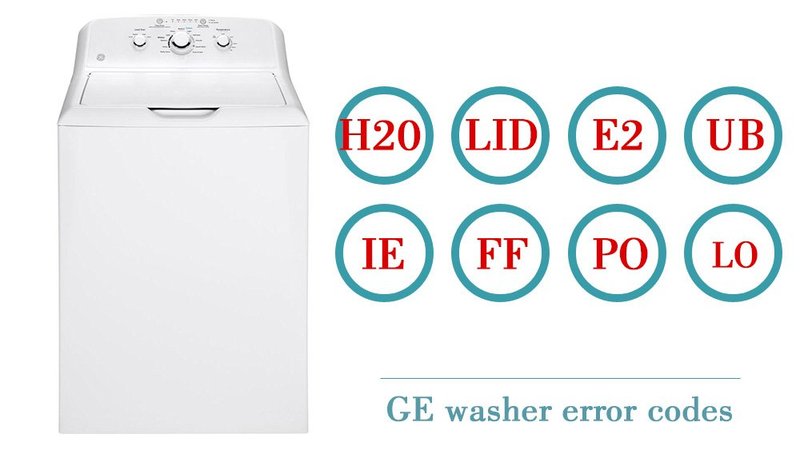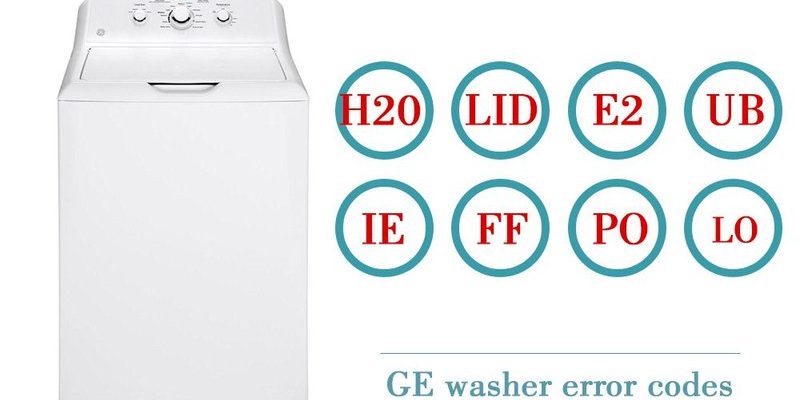
In the world of modern appliances, error codes are akin to your car’s dashboard warning lights. They’re a way for machines to communicate with us, letting us know when something isn’t quite right. When your GE washing machine flashes “HE,” it’s signaling that there’s an issue with heating. This error is specifically related to the water not reaching the desired temperature for optimal washing. Ignoring this error might seem tempting, especially if the machine continues to work, but it’s not advisable. Imagine brushing aside a “check engine” light in your car—it might still drive, but underlying issues could lead to bigger problems down the road.
Understanding the HE Error Code
The “HE” error code stands for “Heating Error.” This generally indicates that the washing machine is having trouble heating the water to the required temperature. Modern washing machines, like those from GE, are designed to use hot water for enhanced cleaning, particularly for stubborn stains. If the water isn’t heating correctly, it could mean your clothes aren’t getting as clean as they should.
You might associate this error with something as simple as your home water heater acting up. If you’ve ever had a cold shower when expecting hot water, you’ve experienced a similar issue. However, unlike taking a quick cool shower, washing clothes in cold water when they require heat might not remove tough stains effectively. This could lead to a need for rewashing, using more detergent, and ultimately wasting more water and energy—none of which are ideal.
Sometimes, the cause of an HE error is external to the machine itself. For instance, if there’s an issue with your home’s water heater, or if the water supply line to the machine is compromised, these could prevent hot water from reaching your washer. It’s always a good idea to check these external factors first before diving into potential machine repairs.
Common Causes of HE Error Codes
So what causes this pesky error code? One of the main culprits could be a faulty heating element in the machine. This is like a kettle failing to boil water—without it, your desired temperature is never reached. Another frequent issue might be a malfunctioning thermostat, which incorrectly reads and regulates the water temperature.
Another potential cause is a glitch in the machine’s control board, the brain of your appliance. Think of it as a faulty signal causing miscommunication between components—if the brain isn’t working, the body can’t perform correctly. In some cases, a simple reset of the machine’s electronics can fix this, but often it may require professional service to diagnose the exact problem.
Water supply issues can also trigger an HE error. For example, if the water flowing into the machine is too cold because it comes from a distant or uninsulated pipeline, the machine may struggle to heat it sufficiently. Inconsistent water pressure can further exacerbate this issue, as it affects the machine’s ability to fill with water at the correct rate and temperature.
What Happens If You Ignore It?
Ignoring the HE error code might seem harmless initially, especially if your washing machine is still running. However, over time, continual operation with this error can lead to larger problems. For one, your clothes may not be as clean as they should be, resulting in hygiene issues and potential skin irritations, especially for those with sensitive skin.
Moreover, persisting with an unresolved issue could lead to greater damage within the machine, increasing the risk of costly repairs. For example, if the heating element continues to fail, it can lead to further strain on the machine’s motor and other components, resulting in more significant failures.
Prolonged ignoring of the issue could also void any existing warranties. Most appliance warranties require users to address and repair error codes promptly. This could leave you with no coverage for future repairs, turning a small problem into an expensive headache.
Steps to Address the HE Error Code
So, you’ve decided not to ignore it—great! But what should you do next? Start by checking the external factors, like your home’s water heater and the water supply line. Ensure the heater is functioning correctly, and the water line is secure and unclogged. You’ll want the basics covered before delving into potential machine repairs, akin to checking your electrical panel when your lights go out.
If the external factors check out, your next move should be a simple power reset. Unplug your washing machine, wait a minute or two, and plug it back in. This can sometimes reset the control board and resolve the glitch. It’s much like restarting your computer when it acts up—simple yet surprisingly effective.
If resetting doesn’t work, it might be time to call in a professional. A certified technician can perform diagnostic tests to pinpoint the exact problem. They have the tools and expertise to safely replace faulty components like the heating element or thermostat.
Preventative Measures and Final Thoughts
Regular maintenance is key to preventing issues like the HE error code. Think of it as taking your car for regular oil changes—routine checks can help catch small problems before they escalate. Regularly inspect hoses for blockages, ensure your water heater is in tip-top shape, and keep your washing machine clean and free of debris.
Occasionally running a hot cycle without clothes can help keep the machine’s internals clean and functioning well. This simple trick can prevent the buildup of detergent and other residues, which might otherwise lead to errors.
In conclusion, while ignoring the GE washing machine’s HE error code might seem convenient, it’s not a long-term solution. Addressing the issue head-on will save you time, money, and frustration in the future, ensuring your clothes come out fresh and clean every time.
